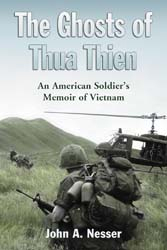MWSA Review
While every American and Mexican schoolchild knows the story of the Alamo, few “Norteamericanos” know the story of the massacre that followed it, that of killing 250 unarmed Texan prisoners at Goliad.
Author Jay Stout’s latest book “Slaughter at Goliad” brings this blot on the Mexican military into the harsh light of day. Exceptionally well-written, he brings his experience as a Marine combat aviator into the battle as he explains the fight in terms that every reader can understand.
Superficially, this is a simple story; after a one-sided battle won by the Mexican Army over a bunch of rag-tag Texan-American volunteers, some 250 prisoners were marched to Goliad. After 200 more prisoners were brought to the compound, where they were all massacred on Palm Sunday, March 27, 1836. It was one of the single largest losses of life in the history of the young United States, and the repercussions affected Texas, America, and Mexico virtually immediately.
Of special importance to the battle and to the book is Stout’s examination of the personalities and politics involved. Stout portrays James Walker Fannin, the commander of the doomed unit, as an ineffective leader who misjudged his adversary, Mexico’s infamous General Antonio Lopez de Santa Anna. As author Stout explains, rather than courage, it was Fannin’s incompetence as a battlefield commander that put his men into a position where they had to either surrender or be killed – and it was equally Santa Anna’s ego and short-sightedness that led him to execute Fannin and his troops.
Fully understanding Clausewitz’s dictum that ‘war is merely politics by another means’, Stout goes on to explain how this massacre was integral into galvanizing American public opinion in favor of a war against Mexico.
Not to be forgotten is Stout’s description of the boots-on-the-ground stories of Fannin’s men. They came to Texas for various reasons, and with equally various and vague backgrounds, yet were integral to the Texan drive for independence. “Manifest destiny” started here, with men like those under Fannin’s command, and Stout does an excellent job documenting it.
Neither pro-nor-con Mexico or America, Jay Stout has written an interesting and sophisticated battle history of a long-forgotten incident that helped Texas win their war of independence. This is well worth reading for both the casual and educational reader of both military and North American history. ! Ole !
Reviewed by: Andrew Lubin (2008)
Author's Synopsis
Texas lost many volunteers during its hard-won fight for independence from Mexico, but one harrowing episode stands out. Following a one-sided battle on the prairie near Coleto Creek, 250 mostly American prisoners were marched back to the presidio at Goliad where they were joined by more than 200 others. Subsequently, on orders from President Antonio Lopez de Santa Anna, they were brutally slaughtered on Palm Sunday, March 27, 1836. The loss of so many fighting men in a single day was, at the time, one of the largest in U.S. history. The reaction in Texas was one of horror, fear, and, for some, a lust for revenge. The revulsion felt throughout the United States turned American sympathies against Mexico and its efforts to preserve its territorial integrity. Based on extensive research, this book offers a powerful description of what happened and an astute analysis of why it happened. For historical background, it also presents an overview of Texas and Mexican history and the factors that led to the massacre.
As a career military officer, author Jay Stout offers insights not grasped by other writers on the subject. He pays particular attention to the leadership on both sides during the revolution and discusses why the massacre has been largely ignored in the years since. Stout deglamorizes the fight against Santa Anna and his army, while at the same time acknowledging the Mexican perspective and the motivations of Mexico's leaders. The author's dynamic writing style, combined with the compelling subject matter, makes this book attractive to everyone interested in the military, Texas, and American history.




















